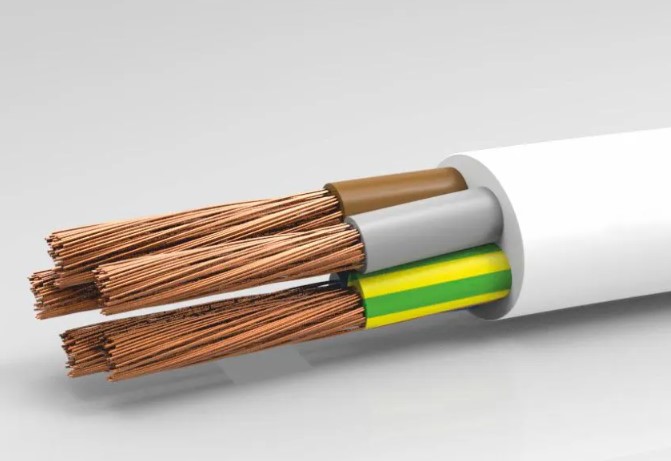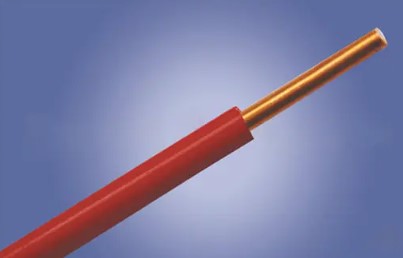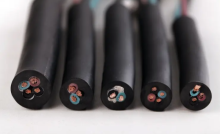좌초와 솔리드 케이블의 차이


연선
케이블에는 가닥 또는 고형 케이블이 포함됩니다. 가닥 또는 솔리드 케이블을 사용하는 선택은 몇 가지 요인에 따라 다릅니다., 응용 프로그램 유형 및 프로젝트 환경과 같은. 올바른 유형의 케이블을 선택하면 프로젝트 케이블을보다 논리적으로 만들 수 있습니다..


좌초 케이블은 무엇입니까??
가닥 케이블에는 a가 있습니다 여러 전선으로 구성된 도체 함께 꼬인 다음 외부 재킷에 싸여 있습니다. 일반적으로, 이 유형의 케이블은 사양으로 식별 할 수 있습니다.. 예를 들어, 에이 7 엑스 12 케이블은 케이블을 나타냅니다 7 전선 12 함께 길게 묶여 있습니다.
좌초 된 와이어는 매우 유연하며 금속 피로에 대한 저항력이 높습니다.. 일반적으로, 스트레드 와이어는 인쇄 회로 보드 제조업체를위한 선택된 제품입니다.. 이 유형의 애플리케이션에서 솔리드 와이어를 사용하면 제조 중에 회로에 더 큰 스트레스를주기 때문입니다.. 가닥 전선은 컴퓨터 마우스 케이블에도 널리 사용됩니다., 용접 전극 케이블 및 AC 전원 케이블.
단단한 와이어는 무엇입니까??
솔리드 케이블에는 도체로 단일 고체 구리선이 있습니다.. 두 배선 센터 또는 배선 센터와 유통 상자 사이의 영구 기본 링크에 사용됩니다.. 이 유형의 케이블은 낮습니다 감쇠 그리고 저렴합니다. 일반적으로, 솔리드 케이블은 수평 및 수직 구조화 된 케이블에 사용되며 일단 설치 한 후 구부러지지 않아야합니다..


좌초와 솔리드 케이블의 차이
1. 유연성. 솔리드 케이블은 덜 유연합니다, 가닥 케이블은 더 유연합니다. 단단한 케이블은 반복적으로 구부러지면 파손되는 경향이 있습니다.. 하지만, 가닥 전선으로 종료 될 때, 개별 도체 와이어는 시간이 지남에 따라 파손되거나 느슨합니다.. 대조적으로, 솔리드 와이어는 항상 원래 모양을 유지합니다. 요약하면, 안정적인 배선 환경에서 솔리드 와이어를 사용하고 더 곡선이 있거나 제한된 공간에서 가닥 전선을 사용하십시오..
2. 생산하다. 더 높은 (희석제) 게이지 숫자는 낮은 손실보다 손실이 높습니다 (더 두꺼운) 게이지 번호. 따라서, 좌초 케이블이 있습니다 20% 에게 50% 고체 구리 케이블보다 더 감쇠 (단단한 구리 케이블). 게다가, 가닥 케이블은 도체의 공기가 있기 때문에 고체 케이블보다 DC 저항이 높습니다.. 전반적인, 솔리드 코어 케이블은 더 나은 전치 도체이며 우수하고 안정적인 전기 특성을 제공합니다..
와이어에 더 많은 가닥의 와이어가 있지만, 유연성이 좋습니다, the number of strands affects the price – the more strands that make up a cable, 더 많은 비용이 듭니다. 비용을 낮추기 위해, 범주 6 카테고리 6A 스트레드 케이블은 적절한 유연성을 유지하기에 충분한 수의 가닥을 갖도록 설계되었습니다., 그러나 큰 가격 차이를 만들기에는 충분하지 않습니다. 다시 말해서, 가닥 케이블을 선택하는 비용이 추가되었습니다 (꼰 케이블)솔리드 케이블이 적절하지 않은 환경 및 응용 분야에서 성능 또는 표준을 손상시키기에 충분하지 않습니다.. 더 큰 유연성이 필요한 환경의 제어 된 영역에서 항상 가닥 케이블을 사용하십시오.!
이 정보가 도움이되기를 바랍니다. ZMS 케이블은 설치를위한 기술 지원을 제공하는 몇 가지 안정적인 경제 케이블을 제공합니다.. 만약 질문이 있다면, 문의하시기 바랍니다.
Recent Posts
구리에서 섬유로: 케이블 진화
소개: 그만큼 "Lifeline of Civilization" Across Time and Space In 1858, after five heartbreaking failures,…
3 상 케이블이 무엇인지 빠르게 이해하는 방법? 여기에서 가장 좋아하는!
In the world of industrial and commercial power distribution, three-phase cables play a critical role…
폭풍과 홍수! 방수 케이블이 전력을 보호하는 방법?
최근 몇 년 동안 소개, 폭우와 홍수는 전 세계적으로 점점 더 빈번 해지고 있습니다, causing severe…
순환경제에서 케이블산업의 역할과 과제
소개 지속가능성이 글로벌 우선순위가 되면서, industries across the spectrum are reevaluating their operations…
케이블 산업이 글로벌 공급망 과제를 어떻게 충족할 수 있습니까??
글로벌 공급망은 제조업체를 연결하는 복잡하고 필수적인 네트워크입니다., 유통업체, 소매점,…
재생에너지가 케이블 수요에 미치는 영향
Introduction The global shift toward renewable energy has become a cornerstone of efforts to combat…

